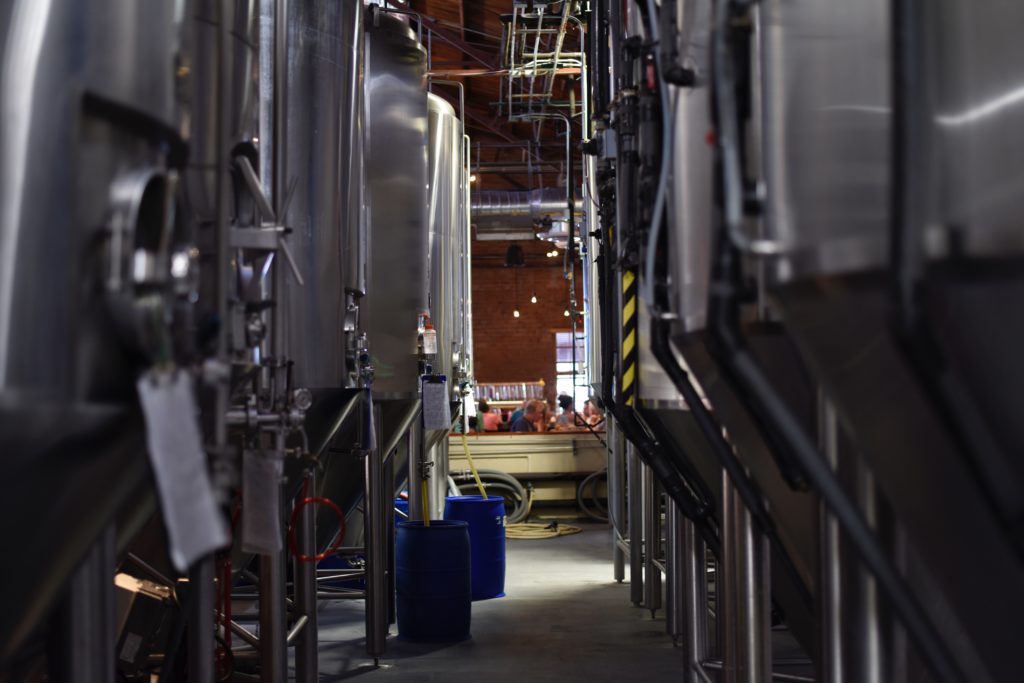Brewery Wastewater Treatment with DAF

While the ingredients utilized during the brewing process is natural and may seem harmless, the resulting wastewater byproduct is difficult to treat as it contains high levels of TSS, BOD and COD, which can increase cost and hamper efficiency. Although breweries use ingredients such as hops and barley, the after effect requires a complex process to treat the water and render it safe for release.
Characteristics of Brewery Wastewater Effluents
- High levels of sugar and alcohol
- Solids that easily turn into sludge
- Low pH levels
- Average COD of over 5000 mg/L
- Average BOD of over 3000 mg/L
- Total Suspended Solids (TSS) average 1800 mg/L
Hazards Presented by Brewery Wastewater
Wastewater produced by breweries requires treatment, as the effluents do not meet regulatory standards for release on their own. This treatment can often be time-consuming and expensive due to the need forhigh levels of oxygen to offset the high levels of BOD (Biological Oxygen Demand) needed to aerate and clarify the water.
Another potential hazard from brewery wastewater, due to its natural levels of acidity, is the chance of corrosion. Brewery wastewater can produce hydrogen sulfide gas, which can later create sulfuric acid when mixed with water vapor. This acid can corrode the treatment containers made of concrete or mild steel, causing further delays and depreciation of equipment over time.
Also, brewery wastewater acid levels can fluctuate, depending on the activity of the brewery and what is being produced. While this wastewater is primarily low in pH, these levels can increase at certain times, making the likelihood of solid deposits higher and, therefore, increases the amount of potential sludge that needs to be removed during the treatment process.
What is the Brewery Wastewater Treatment Process?
Brewery wastewater requires aeration treatment. By pumping oxygen into the resulting wastewater after the brewing process, helpful bacteria are produced. These bacteria can then break down and consume the residuals created by the higher amounts of sugar and alcohol found in this type of wastewater. The resulting matter is then filtered out, leaving treated, more environmentally water, in its place.
With the higher levels of BOD, the aeration process can be more taxing for brewery wastewater treatment. The high amount of oxygen demanded means an increase in power needed and, therefore, electricity costs. This treatment and clarification process can also take more time than other effluent treatment processes due to the amount of TSS and BOD this type of water contains.
Oxygen is used to promote the growth of bacteria that can consume the BOD, but the higher amounts of BOD also create more sludge, which must then be removed from the effluents.
Why E-DAF?
For the best brewery wastewater treatment results, both efficient sludge removal and oxygen aeration are vital. With the help of an Enhanced Dissolved Air Flotation (E-DAF), the high levels of TSS (Total Suspended Solids) are cut by as much as 99%. That, in-turn, reduces the BOD/COD levels by as much as 50%, prior to the biological step.
By utilizing countercurrent scraping, the Ecologix E-DAF system encourages a more efficient sludge separation with minimal chance of inadvertent sludge migration into the effluent water. Since brewery wastewater often contains higher amounts of solids and resulting sludge, this feature is instrumental. The Ecologix E-DAF system also contains sludge grating and thickening properties, which also prevents the migration of sludge and makes for easier containment and removal.
Why MBBR (Moving Bed Biofilm Reactor)
To further reduce the footprint of a biological treatment, Ecologix is offering the most efficient Bio-Chips in the market, with the largest surface area per cubic feet of media https://www.ecologixsystems.com/system-mbbr/. The increased surface area reduces the footprint of the tanks required to treat the wastewater, thus minimizing the footprint of the overall wastewater treatment facility.
The MBBR Bio-Chip 30 is a high performance MBBR carrier that provides a protected active surface area of > 5,500 m2/m3 for the immobilization of microorganisms which are in charge of the different biological water treatment processes. That is 6-10 time more surface area than the other leading carriers in the market.

